La Crosse Technology WS-9025U Handleiding
La Crosse Technology
Weerstation
WS-9025U
Bekijk gratis de handleiding van La Crosse Technology WS-9025U (6 pagina’s), behorend tot de categorie Weerstation. Deze gids werd als nuttig beoordeeld door 43 mensen en kreeg gemiddeld 5.0 sterren uit 22 reviews. Heb je een vraag over La Crosse Technology WS-9025U of wil je andere gebruikers van dit product iets vragen? Stel een vraag
Pagina 1/6

WS-9025
Weather Projection Station
Instruction Manual
INTRODUCTION:
Congratulations on purchasing this state-of-the-art weather projection station as an example of innovative design and quality piece of
engineering. Providing radio controlled time, date, calendar, perature, indoor and outdoor remoon phase, indoor and outdoor tem lative
humidity, this unit will never keep you guessing on current and future weather conditions. Operation of this product is simple and
straightforward. By reading this operating manual, the user will receive a better under on together standing of the weather projection stati
with the optimum benefit of all its features.
FEATURES:
The Weather Projection Station
Battery
compartment
LCD
Display
Function
keys
SNOOZE
key
Function
ke
y
s
Projector
• WWVB Radio controlled time with manual setting option
• Time reception ON/OFF (user selectable)
• 12/24 hour time display
• DST ON/OFF (daylight saving time)
• US time zone map
• Time zone option ±12 hours
• Month, date, weekday calendar display
• Alarm setting with snooze function
• Automatic daylight saving time
• Display 12 moon phases throughout the year with moon/tide
indication
• Weather forecasting with 3 weather icons
• Weather tendency indicator
• Indoor comfort indicator
• Temperature display with MIN/MAX records and time of reception
• Indoor and outdoor temperature display in ºC/ºF Humidity data with
MIN/MAX records
• Indoor and outdoor humidity display as RH%
• Can receive up to 3 transmitters
• Time projection display (hour and minute)
• Outdoor temperature projection display (degrees ºC or ºF)
• Alternate projection display mode selectable
• Projection with adjustable brightness and projection orientation
possible
• LCD contrast selectable
• LED back light
• Low battery indicator
• Table standing
• AC/DC power adapter included
The Outdoor Thermo-hygro Transmitter
Wall mounting
base
• Remote transmission of outdoor temperature and humidity to Weather Projection Station by 433 MHz
• Rain proof casing
• Wall mounting case
TO INSTALL AND REPLACE BATTERIES IN THE WEATHER PROJECTION STATION
The Weather Projection Station uses 3 x AA, IEC LR6, 1.5V batteries. To install and replace the batteries, please follow the
steps below:
1. Insert finger or other solid object in the space at the bottom center of the battery compartment and lift
up to remove the cover.
2. Insert batteries observing the correct polarity (see marking).
3. Replace compartment cover.

TO INSTALL AND REPLACE BATTERIES IN THE THERMO-HYGRO TRANSMITTER
The Thermo-hygro transmitter uses 2 x AA, IEC LR6, 1.5V batteries. To install and replace the batteries, please follow the steps below:
1. Remove the battery cover.
2. Insert the batteries, observing the correct polarity (see marking).
3. Replace the battery cover on the unit.
Note:
In the event of changing batteries in any of the units, all units need to be reset by following the setting up procedures. This is due to a
random security code assigned by the transmitter at start-up. This code must be received and stored by the Weather Projection Station in
the first 3 minutes of power being supplied to the transmitter.
BATTERY CHANGE:
It is recommended to replace the batteries in all units on an annual basis to ensure optimum accuracy of these units.
Please participate in the preservation of the environment. Return used batteries to an authorized depot.
SETTING UP
The Weather Projection Station can be either batteries-operated or powered by the provided AC-DC adapter.
BATTERY INSTALLATION:
1. First, insert the batteries into the Weather Projection Station (see “To install and replace batteries in the Weather Projection Station”). Once the
batteries are in place, all segments of the LCD will light up briefly and a short signal tone will sound. Then the ALM1 6:00, the indoor temperature and
humidity, the time as 12:00, the date as WE 1.1., the moon icon, the weather icons (sun and clouds) will be displayed. If the indoor temperature and indoor
humidity are not displayed after 15 seconds, remove the batteries and wait for at least 3 minutes before reinserting them. Once the indoor data is displayed
proceed to step 2.
2. Within 4 minutes of activating the Weather Projection Station, place the batteries into the transmitter (see “To install and replace batteries in the Thermo-
hygro Transmitter“).
3. After inserting the batteries into the transmitter, the Weather Projection Station will start receiving data from the transmitter. The outdoor temperature and
humidity should then be displayed on the Weather Projection Station. If this does not happen after 3 minutes, the batteries will need to be removed from
both units and reset from step 1.
4. The Weather Projection Station can receive up to 3 remote Outdoor Thermo-hygro transmitters. If you have purchased additional transmitters, repeat from
step 3 for all extra transmitters. However, ensure that you leave 10 seconds in between the reception of the last transmitter and the set-up of the following
transmitter. The Weather Projection Station will number the transmitters in the order of set-up, i.e. the first transmitter will have the temperature/humidity
displayed with the number 1 against it and so on.
5. With less than 3 transmitters received, the Weather Projec e remaining one in approximateltion Station will try to pick up th y another 3 minutes. If 3
transmitters are received, the Weather Projection Station will stop further reception.
6. Once the outdoor temperature and the humidity have been received and displayed on the Weather Projection Station, the WWVB time code reception is
automatically started. This takes typically between 6-8 minutes in good conditions.
7. If after 10 minutes, the WWVB time has not been received, use the SET key to manually enter a time initially. The clock will automatically attempt to receive
the WWVB time from 12:00 to 6:00 a.m. for a successful reception. When WWVB reception signal is successful, the received time will override the manually
set time. The date is also updated with the received time. The next reception attempt will occur on the following day. (Please refer to notes on “About
WWVB Radio controlled Time” and “Manual Time Setting”).
Your Weather Projection Station is now operational!
Note:
If the batteries are used as the main power source:
1. Projected image brightness, alar ill be weaker when batteries are low m volume and back-light strength w
2. Battery life time will be much less than 1 year; depending on the frequency of projection and alarm.
TO USE THE PROJECTOR POWER ADAPTER
The unit comes with an AC-DC adapter for using the projector for an extended period of time, such as throughout the night.
To connect the AC-DC adapter:
Important!
Make sure that your household voltage is 120V! Otherwise it can result in damaging your Weather Projection Station.
1. Connect the AC-DC adapter to a wall socket. Plug the adapter into the jack at the side of the Weather Projection Station. All segments of the LCD will
light up briefly and a short signal tone will sound. Then the ALM 1 6:00, the indoor temperature and humidity, the time as 12:00, the date as WE 1.1.,
the moon icon, the weather icons (sun and clouds) will be displayed. If the indoor temperature and indoor humidity are not displayed after 15
seconds, remove the batteries and wait for at least 3 minutes before reinserting them.
2. Within 4 minutes of activating the Weather Projection Station, place the batteries into the transmitter (see “To install and replace batteries in the
Thermo-hygro Transmitter“).
3. After inserting the batteries into the transmitter, the Weather Projection Station will start receiving data from the transmitter. The outdoor temperature
and humidity should then be displayed on the Weather Projection Station. If this does not happen after 3 minutes, the batteries will need to be
removed from both units and reset from step 1.
4. The Weather Projection Station can receive up to 3 remote Outdoor Thermo-hygro transmitters. If you have purchased additional transmitters, repeat
from step 3 for all extra transmitters. However, ensure that you leave 10 seconds in between the reception of the last transmitter and the set-up of the
following transmitter. The Weather Projection Station will number the transmitters in the order of set-up, i.e. the first transmitter will have the
temperature/humidity displayed with the number 1 against it and so on.
5. With less than 3 transmitters received, the Weather Projec e remaining one in approximateltion Station will try to pick up th y another 3 minutes. If 3
transmitters are received, the Weather Projection Station will stop further reception.
6. Once the outdoor temperature and the humidity have been received and displayed on the Weather Projection Station, the WWVB time code
reception is automatically started. This takes typically between 6-8 minutes in good conditions.
7. If after 10 minutes, the WWVB time has not been received, use the SET key to manually enter a time initially. The clock will automatically attempt to
receive the WWVB time from 12:00 to 6:00 a.m. for a successful reception. When WWVB reception signal is successful, the received time will
override the manually set time. The date is also updated with the received time. The next reception attempt will occur on the following day. (Please
refer to notes on “About WWVB Radio controlled Time” and “Manual Time Setting”).
Your Weather Projection Station is now operational!
Note:
If the Weather Projection Station is powered through the AC-DC adapter, the projection will be constantly ON.
If the Weather Projection Station is battery operated, only when the SNOOZE key is pressed, the projection will turn ON. Once the SNOOZE key is released, there
will be no projection.
USING BOTH BATTERIES THE POWER ADAPTOR
If the Weather Projection Station is first powered by batteries and the AC-DC adapter is subsequently used for extended period of time, the main power source of
the Weather Projection Station will switch to AC power. The batteries will then act as a backup power source in the case of power failure.

MANUAL TIME SETTING:
In case the Weather Projection Station cannot detect the WWVB-signal (for example due to disturbances, transmitting distance, etc.), the time can be manually
set. The clock will then work as a normal Quartz clock.
Hour flashing
Icons flashing
1. The hour digit will start flashing.
2. Use the CH/+ key to set the hour.
3. Press again the SET key to set the minutes. The minute digits start flashing.
4. Use the CH/+ key to set the minutes.
5. Confirm with the SET key and enter the Calendar setting.
Note:
The unit will still try to receive the signal between 12:00 to 6:00 a.m. every day despite it being manually set and if the WWVB time reception function has been set
ON. When it does receive the signal, it will change the manually set time into the received time. During reception attempts the WWVB tower icon will flash. If
reception has been unsuccessful, then the WWVB tower icon will not appear but reception will still be attempted the following hour.
Year
Date and month (24hr time format)
Month and date (12hr time format)
Minutes flashing
CALENDAR SETTING:
The date default of the Weather Projection Station is 1. 1. in the year 2003. Once the radio-controlled time signals are received, the date is automatically updated.
However, if the signals are not received, the date can also be set manually.
1. The year starts flashing.
2. Use the CH/+ key to set the year (between year 2003-2029).
3. Press the SET key again to confirm and to enter the month setting. The month starts flashing.
4. Use the CH/+ key to set the month.
5. Press the SET key again to confirm and to enter the date setting mode. The date starts flashing.
6. Use the CH/+ key to set the date.
Confirm all calendar settings with the SET key and enter the Snooze setting.
SNOOZE SETTING:
The snooze time can be set OFF to a maximum time of 30 minutes (default is 10 minutes):
1. Use the CH/+ key to set the snooze time. Each pressing of the key will increase the snooze time by 5 minutes. The snooze can also be set OFF when the
“OFF” digit is being displayed.
2. Confirm with the SET key and enter the Temperature setting
Note:
If the snooze time has been set “OFF”, the snooze function will not be activated.
°F/°C TEMPERATURE SETTING:
The temperature display can be selected to show temperature data in °F or °C (Default °F).
1. Use the CH/+ key to toggle between “°F” or “°C”.
2. Confirm with the SET key and enter the Weather forecasting icon sensitivity setting.
WEATHER FORECASTING ICON SENSITIVITY SETTING:
Snooze time
Digit flashing
Digit flashing
For locations with rapid changes of weather conditions, the weather icons can be set to a different level for faster display of weather conditions.
1. The current sensitivity value will start flashing.
2. Use the CH/+ key to set the weather sensitivity level. There are 3 levels of setting: 1, 2 and 3; level 1 is the most sensitive setting; level 3 is the slowest
recording setting (default setting is "2").
Confirm with the SET key and exit the Manual settings.
ALARM SETTING:
A
larm time
A
larm icons
The alarm time can be set when pressing the ALARM 1 or ALARM 2 key.
1. Press the ALARM 1 or ALARM 2 key until the alarm digits flash.
2. Use the HOUR/IN key to set the alarm hour.
3. Use the MIN/OUT key to set the alarm minute.
4. Confirm with the ALARM 1, ALARM 2, or Snooze key and exit the Alarm setting.
Note:
The maximum alarm ring duration is 2 minutes. The alarm setting can be activated or deactivated manually by pressing the ALARM 1 or ALARM 2 key, depending
on which one is activated. The alarm icon will be displayed on the LCD if the setting is activated.
Product specificaties
| Merk: | La Crosse Technology |
| Categorie: | Weerstation |
| Model: | WS-9025U |
Heb je hulp nodig?
Als je hulp nodig hebt met La Crosse Technology WS-9025U stel dan hieronder een vraag en andere gebruikers zullen je antwoorden
Handleiding Weerstation La Crosse Technology

4 Maart 2025

7 Januari 2025

7 Januari 2025

19 November 2024

19 November 2024

19 November 2024

22 Augustus 2024

4 Maart 2024

15 Augustus 2023

15 Augustus 2023
Handleiding Weerstation
- HomeMatic
- Telefunken
- Digi-tech
- Inovalley
- Thierry Mugler
- Hama
- Lowrance
- Prologue
- Homematic IP
- Dexford
- Chacon
- EMOS
- Gewiss
- Balance Meteo
- ChiliTec
Nieuwste handleidingen voor Weerstation
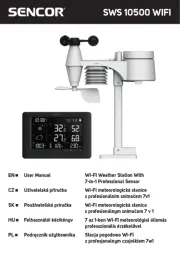
29 Juli 2025
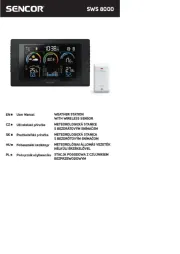
29 Juli 2025
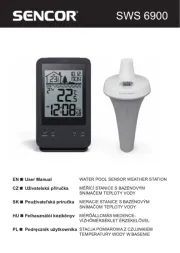
29 Juli 2025
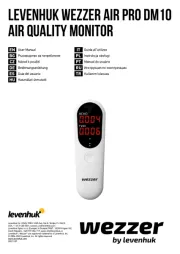
15 Juli 2025
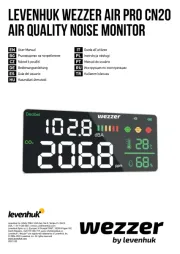
15 Juli 2025
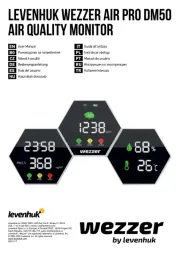
14 Juli 2025
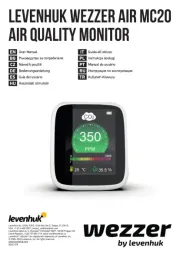
14 Juli 2025
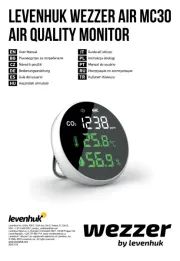
14 Juli 2025
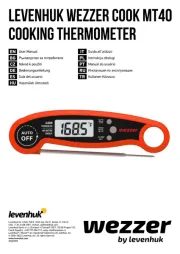
14 Juli 2025
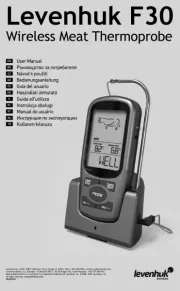
14 Juli 2025